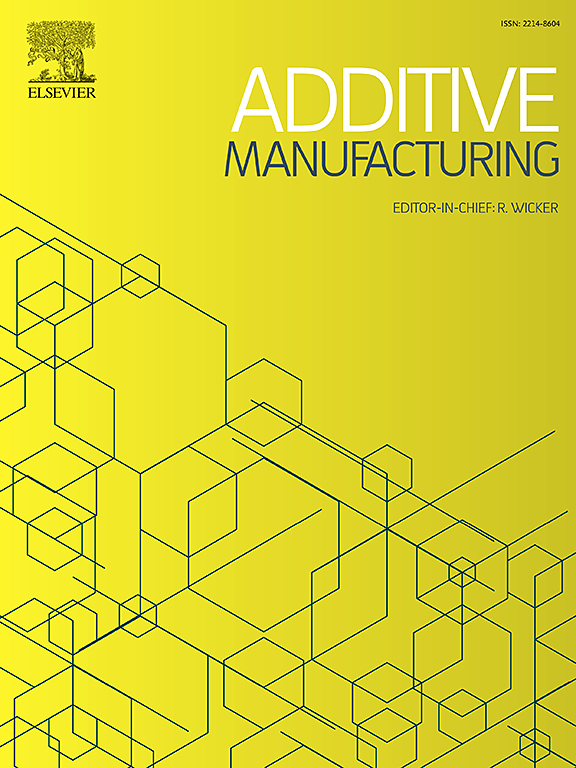Automated desktop wiring of micromodular electronic systems with submicron electrohydrodynamic jet printed interconnects
IF 10.3
1区 工程技术
Q1 ENGINEERING, MANUFACTURING
引用次数: 0
Abstract
Wiring microscale modular electrical components into functional circuits presents significant challenges in fabricating high-resolution interconnects through contactless, maskless processes and aligning them reliably with imprecisely placed components. This work introduces an integrated, desktop-scale process flow for assembling high-performance micromodular electronic systems, by synergistically combining: (1) modularized components for seamless electrical interconnection under ambient conditions, (2) vision-assisted adaptive routing to compensate for irregular placement and orientation, and (3) electrohydrodynamic jet printing for submicron-resolution interconnect fabrication. Physical interface requirements (e.g., approach angle, overlay count, continuation length, and deviation tolerance) and process constraints (e.g., nozzle idle time, crosstalk spacing, and stage acceleration limits) are embedded directly into routing algorithms to ensure reliable, high-quality interconnect formation. Statistical evaluation demonstrates high routing feasibility and runtime efficiency across varying circuit complexities and layout conditions. Experimental validation using micromodular n-MOSFETs as building blocks successfully assembled transistor test structures and depletion-load nMOS inverters, achieving 650 nm interconnect resolution, 82% device-level yield, and excellent transistor characteristics including sub-1 V threshold voltages and electron mobilities exceeding 600 cm/(Vs). This adaptive, process-aware routing framework advances the integration of additive manufacturing and modular microelectronics, paving the way for scalable, robust, and highly customizable electronic systems.
采用亚微米电流体动力喷射打印互连的微模块电子系统的自动化桌面布线
将微型模块化电子元件布线到功能电路中,通过非接触式、无掩模工艺制造高分辨率互连,并将它们与不精确放置的组件可靠地对齐,这是一个重大挑战。这项工作介绍了一个集成的桌面级工艺流程,用于组装高性能微模块电子系统,通过协同结合:(1)模块化组件在环境条件下实现无缝电气互连,(2)视觉辅助自适应路由以补偿不规则的位置和方向,以及(3)用于亚微米分辨率互连制造的电流体动力喷射打印。物理接口要求(例如,接近角、覆盖数、连续长度和偏差公差)和工艺限制(例如,喷嘴空闲时间、串扰间距和级加速度限制)直接嵌入路由算法中,以确保可靠、高质量的互连形成。统计评估表明,在不同的电路复杂性和布局条件下,具有很高的路由可行性和运行效率。实验验证采用微模块化n- mosfet作为构建模块,成功组装了晶体管测试结构和耗尽负载nMOS逆变器,实现了650 nm的互连分辨率,82%的器件级良率,以及优异的晶体管特性,包括亚1 V阈值电压和超过600 cm2/(V·s)的电子迁移率。这种自适应的、过程感知的路由框架推进了增材制造和模块化微电子的集成,为可扩展、强大和高度可定制的电子系统铺平了道路。
本文章由计算机程序翻译,如有差异,请以英文原文为准。
求助全文
约1分钟内获得全文
求助全文
来源期刊

Additive manufacturing
Materials Science-General Materials Science
CiteScore
19.80
自引率
12.70%
发文量
648
审稿时长
35 days
期刊介绍:
Additive Manufacturing stands as a peer-reviewed journal dedicated to delivering high-quality research papers and reviews in the field of additive manufacturing, serving both academia and industry leaders. The journal's objective is to recognize the innovative essence of additive manufacturing and its diverse applications, providing a comprehensive overview of current developments and future prospects.
The transformative potential of additive manufacturing technologies in product design and manufacturing is poised to disrupt traditional approaches. In response to this paradigm shift, a distinctive and comprehensive publication outlet was essential. Additive Manufacturing fulfills this need, offering a platform for engineers, materials scientists, and practitioners across academia and various industries to document and share innovations in these evolving technologies.
 求助内容:
求助内容: 应助结果提醒方式:
应助结果提醒方式:


